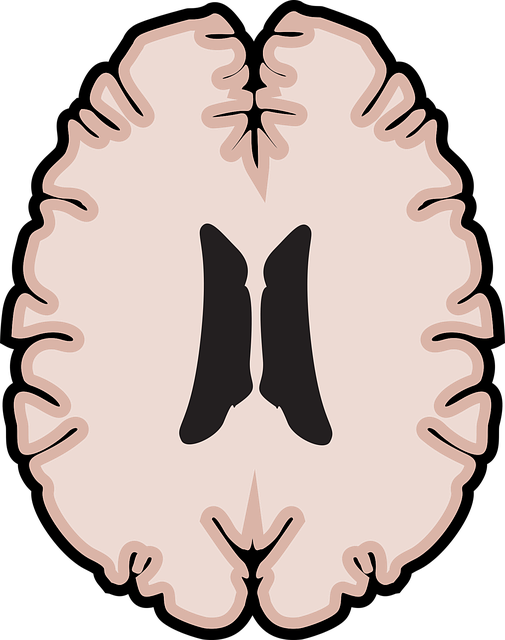Longmont OCD therapy emphasizes risk assessment and harm minimization through tailored, individualized planning. Therapists in Longmont evaluate obsession severity, co-morbidities, and past experiences to create effective treatment plans using CBT, mood management, and crisis intervention. Continuous evaluation ensures these strategies remain relevant, addressing clients' unique needs while prioritizing safety and fostering mental wellness. Key steps include identifying risks, creating personalized strategies, implementing evidence-based interventions, and regularly adjusting approaches based on client progress.
In the realm of Longmont Obsessive Compulsive Disorder (OCD) therapy, risk assessment and harm minimization planning are paramount. This comprehensive guide explores crucial aspects of managing potential hazards during treatment. We delve into understanding risk assessment, identifying specific OCD-related risks, and implementing effective harm minimization strategies. By tailoring plans to each client’s unique needs, therapists can ensure safe, individualized care. Discover implementable steps for seamless risk management and learn how continuous evaluation ensures client safety throughout the therapeutic journey.
- Understanding Risk Assessment in OCD Therapy: Identifying Potential Hazards
- Harm Minimization Strategies: Protecting Clients During Treatment
- Individualized Planning: Tailoring Approaches for Each Client's Needs
- Implementable Steps for Effective Risk Management
- Continuous Evaluation and Adjustment: Ensuring Safety Throughout the Journey
Understanding Risk Assessment in OCD Therapy: Identifying Potential Hazards

Risk assessment is a cornerstone in OCD therapy, enabling clinicians to identify and address potential hazards that could impede a patient’s progress. It involves a thorough evaluation of various factors, including the severity of obsessions and compulsions, co-morbid conditions, and past treatment experiences. In Longmont Obsessive Compulsive Disorder Therapy, understanding these risks is crucial for tailoring effective treatment plans.
By employing emotional well-being promotion techniques and mind over matter principles, therapists can help patients navigate and manage their OCD symptoms. This proactive approach not only minimizes harm but also fosters mental wellness, allowing individuals to regain control of their lives. Through meticulous risk assessment, OCD therapy can be tailored to address specific challenges, ultimately enhancing the patient’s ability to cope with obsessions and compulsions in a meaningful way.
Harm Minimization Strategies: Protecting Clients During Treatment

In the context of Longmont Obsessive Compulsive Disorder (OCD) Therapy, Harm Minimization Strategies are paramount to ensuring client safety and well-being during treatment. These strategies encompass a range of proactive measures aimed at mitigating potential risks and negative outcomes associated with OCD interventions. Mental health professionals in Longmont must implement robust Risk Management Planning, integrating principles from the comprehensive Risk Management Planning for Mental Health Professionals guidelines. This involves careful assessment of each client’s unique needs and vulnerabilities, allowing for tailored interventions that balance treatment efficacy with safety.
Effective harm minimization requires a multifaceted approach, incorporating elements from Mental Health Education Programs Design. Educating both clients and their support systems about OCD, its symptoms, and available treatment options empowers everyone involved to make informed decisions. Moreover, integrating Crisis Intervention Guidance ensures professionals are prepared to handle unexpected or acute situations, providing timely interventions that safeguard clients and prevent adverse events. Such proactive measures not only enhance the overall therapeutic experience but also foster a culture of safety within the mental health landscape of Longmont.
Individualized Planning: Tailoring Approaches for Each Client's Needs

In the context of Longmont Obsessive Compulsive Disorder (OCD) therapy, individualized planning is a cornerstone of effective treatment. Each client’s journey with OCD is unique, shaped by their personal experiences, triggers, and symptoms. Therefore, tailoring therapeutic approaches to meet these specific needs is vital for achieving meaningful progress. Therapists play a crucial role in evaluating the individual’s current coping mechanisms, identifying areas of distress, and developing strategies that resonate with their inner strength.
This personalized approach ensures that treatment plans address not only the symptoms of OCD but also the underlying factors contributing to them. By focusing on mood management and anxiety relief, therapists enable clients to develop resilient strategies for navigating challenging situations. The goal is to empower individuals to take control of their mental health, fostering a sense of self-efficacy and well-being that extends beyond the therapy room.
Implementable Steps for Effective Risk Management

Implementing effective risk management involves several actionable steps tailored to address specific challenges. The process begins with a thorough identification and assessment of potential risks associated with complex issues like Obsessive Compulsive Disorder (OCD). Longmont OCD Therapy practitioners should encourage clients to openly discuss their obsessions and compulsions, fostering an environment where emotions can be expressed freely. This initial step paves the way for developing personalized strategies to mitigate identified risks.
Subsequent actions focus on creating robust safety plans and implementing evidence-based interventions. For instance, therapists might recommend Cognitive Behavioral Therapy (CBT) techniques to help clients challenge negative thought patterns and engage in self-esteem improvement exercises. Additionally, trauma support services can play a pivotal role in addressing underlying emotional wounds that may contribute to OCD symptoms. These strategies collectively aim to enhance coping mechanisms, promote emotional healing processes, and minimize potential harm associated with OCD and related disorders.
Continuous Evaluation and Adjustment: Ensuring Safety Throughout the Journey

In the context of Longmont Obsessive Compulsive Disorder (OCD) Therapy and broader mental wellness initiatives, continuous evaluation and adjustment play a pivotal role in ensuring safety and progress throughout the therapeutic journey. This dynamic approach involves regularly assessing the effectiveness of implemented strategies and interventions, allowing therapists to make informed decisions about necessary adjustments. By closely monitoring a client’s response and emotional regulation, therapists can identify what coping skills development is working well and what areas may require additional attention.
Regular evaluation facilitates a proactive approach to harm minimization planning. As clients navigate their unique challenges, the therapeutic landscape may evolve, necessitating changes in strategies. Embracing this iterative process enables therapists to support individuals in cultivating mental wellness through personalized, effective interventions that cater to their changing needs. Moreover, continuous adjustment reinforces the importance of leveraging evidence-based practices and integrating innovative techniques from the Mental Wellness Podcast Series Production, ultimately enhancing the overall therapeutic experience.
In conclusion, implementing robust risk assessment and harm minimization planning is paramount in Longmont Obsessive Compulsive Disorder (OCD) therapy. By meticulously identifying potential hazards, employing strategic minimization strategies, and tailoring individualized plans, therapists can ensure a safe and effective treatment journey for each client. Continuous evaluation and adjustments are key to maintaining a dynamic and responsive approach, ultimately enhancing the outcomes of OCD therapy.














